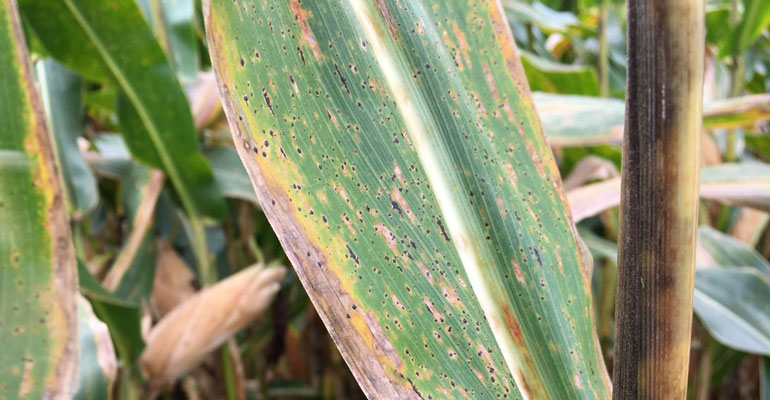
Without a doubt, Illinois farmers have seen the weather change dramatically this growing season. Whether in an area of drought or oversaturation, insects and diseases are making the most of the situation and are poised to impact yield.
Illinois crops are a tale of two worlds, says Jim Donnelly, Dekalb Asgrow technical agronomist, Walnut, Ill. Northern Illinois is facing areas of drought while central Illinois and beyond is dealing with an overload of rain.
Areas that remain in a drought are seeing emergence of corn rootworm.
“We are seeing historically high levels of corn rootworm feeding,” Donnelly says.
He says corn rootworm eggs laid last year were able to survive due to a mild winter. The dry and mild conditions of the spring and early summer have continued to provide conditions for survivability of the pest.
“If you suspect corn rootworm may be present, look for lodged corn at this point in the season. Farmers should look for leaning plants that are tipped at the root and show forms of what we call goosenecking,” he says. “Then, dig up those roots to see if there are any signs of root pruning. If root pruning is present, it’s likely corn rootworm.”
Tar spot is rearing its ugly head again, especially in areas of oversaturation. Tar spot first appeared in Illinois corn in 2015, and by 2018, it was estimated to have resulted in losses of 10 to 20 bushels per acre.
Plenty of rain and humidity in the wet areas of Illinois have been ideal for tar spot, Donnelly says. Early planting also tends to favor early disease development.
Related: Tar spot: It’s coming to a field near you
Continuous rain events with cloudy conditions means only the start of tar spot damage.
“I'm starting to get a lot of farmer pictures of tar spot. So, it is clear to me that it is really starting to develop,” Donnelly says. “We will see what the weather events do here on out, but right now we’re setting the stage for some pretty good tar spot.”
To identify tar spot, look for small, brownish, raised bumps or lesions on the corn leaves that do not come off when rubbed with a finger.
Take action
You can take steps to manage corn rootworm beetle populations now.
“At this time, farmers need to manage adult populations in their fields,” Donnelly says. “The first reason is that adult beetles can clip corn silks and affect corn pollination, which affects yield for this year’s crop. The second reason is that adults seen now will be laying eggs potentially for next year’s corn crop.”
Current high corn rootworm pressure may increase numbers next year, Donnelly says. Controlling adults with insecticide now can be beneficial this year and next year if planting corn in the same field.
He reminds farmers that rotating crops is the No. 1 way to control corn rootworm.
When it comes to handling tar spot, Donnelly emphasizes tassel time is not too late to apply fungicides.
“I think there is a myth out there that fungicides don’t help with respect to controlling tar spot, and that is absolutely not true,” he says. “Fungicides certainly play a key role in management.”
Donnelly says if farmers see tar spot from tassel through R2, they should not be afraid to apply fungicide to prevent yield loss.
“Your best defense for keeping tar spot in check is applying a well-timed fungicide,” he says.
Despite these setbacks, Donnelly says the Illinois crop is overall on track for a successful harvest.
About the Author(s)
You May Also Like






